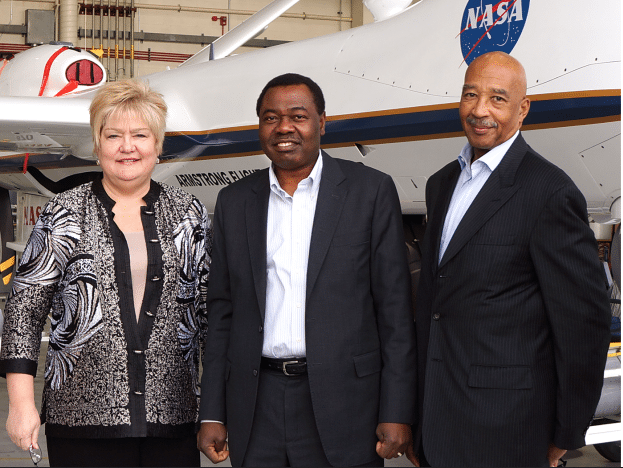 |
| ICAO’s Council President Olumuyiwa Benard Aliu (centre) with U.S. Representative to ICAO Ambassador Michael Lawson (right) and ICAO Air Navigation Bureau Director Nancy Graham (left) at the NASA Armstrong Flight Research Center. Photo: ICAO |
[Avionics Today 12-18-14] The council president of the International Civil Aviation Organization (ICAO), Olumuyiwa Benard Aliu, led a special, high-level and technically oriented ICAO fact-finding mission to the United States last week at the invitation of the FAA. The aim of the mission was to ensure that ICAO remains proactive on regulatory developments relating to Remotely Piloted Aircraft Systems (RPAS) and the emerging realm of sub-orbital space flight.
ICAO is already advanced on its RPAS — or Unmanned Aircraft Systems (UAS) — guidance material due to the ongoing work of its RPAS Panel, a technical body comprised of nearly 100 international state and industry experts in the field. During the UAS leg of their visit, the ICAO officials were provided with updates from NASA, FAA and Department of Defense (DOD) experts on how the U.S. is now integrating civilian and military remotely piloted missions with commercial and general aviation operations.
NASA officials also provided up-close tours of their Ikhana and Global Hawk remotely piloted research unmanned aircraft, which are presently engaged in a variety of scientific and atmospheric research missions.
“These emerging areas of aerospace operations will be evolving and likely expanding dramatically over the coming century,” Aliu said. “And in light of this ICAO will be seeking to anticipate rather than react to the regulatory developments which will be needed, while effectively supporting the exciting innovations now occurring in these areas.”